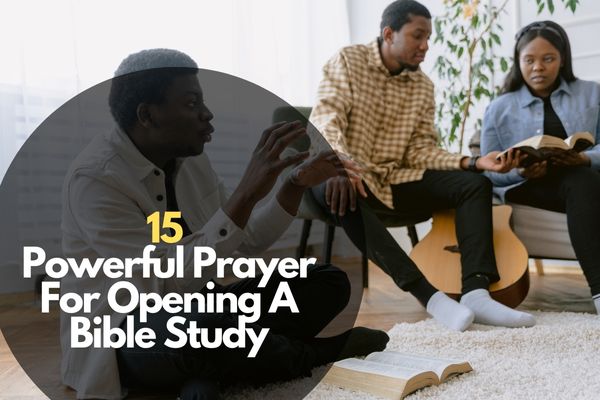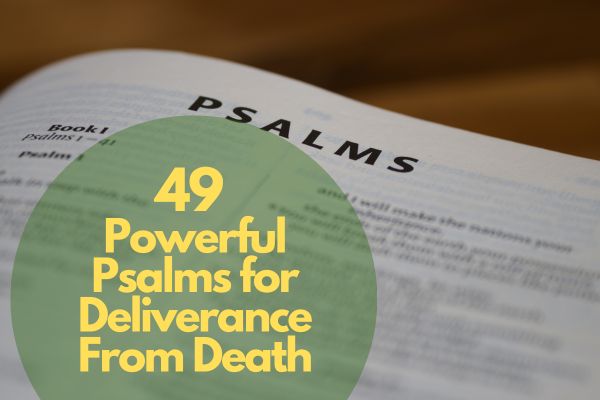In this article, we’ll explore how to open a meeting with prayer, covering everything from understanding its purpose to selecting the right prayer and creating a prayerful atmosphere.
In today’s fast-paced world, where meetings are often seen as a necessary formality, adding a touch of spirituality can transform them into meaningful and purposeful gatherings.
Opening a meeting with a prayer is a powerful way to set the tone, inspire unity, and create a sense of purpose among participants.
1. How to Open a Meeting with Prayer
Before diving into the specifics, it’s crucial to understand why opening a meeting with a prayer is meaningful. A well-chosen prayer can help participants focus, unite their intentions, and create a sense of togetherness.
Whether it’s a business meeting, a community gathering, or any other kind of assembly, a prayer sets the stage for a more profound and purposeful experience.
2. Choosing a Prayer Leader
Selecting the right person to lead the prayer is essential. The prayer leader should be someone who can convey sincerity and reverence.
This individual should possess qualities such as empathy, humility, and the ability to connect with others emotionally.
3. Selecting the Right Prayer
Choosing the appropriate prayer requires consideration of the attendees’ religious and cultural backgrounds. It’s essential to find a prayer that resonates with the group while respecting their diversity. This ensures that the prayer is inclusive and meaningful to all.
4. Creating a Prayerful Atmosphere
To maximize the impact of the prayer, it’s important to create a conducive atmosphere. Set the meeting space in a way that promotes tranquility and focus. Encourage participants to silence their devices and take a moment to clear their minds.
5. Timing and Placement
The timing of the prayer within the meeting agenda is crucial. It should fit naturally, neither rushed nor delayed. It should align with the meeting’s flow and purpose, seamlessly integrating into the proceedings.
6. Crafting a Personalized Prayer
Crafting a personalized prayer is a deeply meaningful and introspective process. It allows you to express your innermost thoughts, emotions, and intentions to a higher power in a way that is unique to your own beliefs and experiences. Here are steps to help you craft a personalized prayer:
- Start with Gratitude: Begin your prayer by expressing gratitude for the blessings in your life, no matter how small or significant. This sets a positive tone and reminds you of the abundance around you.
- Reflect on Your Intentions
Take some time to reflect on what you want to convey in your prayer. Consider your current challenges, hopes, fears, or aspirations. This reflection will shape the content of your prayer. - Choose Your Words
Select words that resonate with you and accurately convey your thoughts and feelings. Be honest and authentic in your expression, as this is a personal prayer. - Address the Divine
Address the higher power or spiritual entity that holds significance for you. You may use titles like God, Creator, Universe, or any other term that aligns with your belief system. - Share Your Feelings
Express your emotions openly. Share your joys, concerns, gratitude, or any other feelings that are on your heart and mind. This is an opportunity to be vulnerable and sincere. - Ask for Guidance or Help
If you have specific needs or requests, present them in a respectful and humble manner. Seek guidance, strength, comfort, or whatever you require. - Confession and Forgiveness
If you have any regrets or feel the need to seek forgiveness, do so sincerely. Acknowledge your mistakes, ask for forgiveness, and commit to personal growth. - Include Others
Extend your prayer to encompass the well-being of others. Pray for loved ones, those in need, and even the broader world. This demonstrates empathy and compassion. - Stay Mindful of Silence
Leave moments of silence in your prayer. These pauses allow you and the Divine to connect on a deeper level and give you time for personal reflection. - Conclude with Hope and Trust
Wrap up your prayer with words of hope, trust, and faith. Express your confidence that the Divine will guide you and provide what you need.
7. Respecting Diversity and Inclusion
In today’s diverse world, it’s essential to be sensitive to different religious beliefs and preferences. If a group is multi-faith or includes non-religious individuals, offering alternatives, such as a moment of reflection, can be inclusive.
8. Guidelines for Leading the Prayer
The designated prayer leader should follow some essential guidelines. These include maintaining brevity, using inclusive language, and avoiding controversial topics. The goal is to ensure that the prayer enhances the meeting’s atmosphere rather than causing discomfort. Guidelines for Leading a Prayer:
- Prepare Your Heart: Before leading a prayer, take a moment to center yourself and cultivate a sense of reverence and humility. Reflect on the purpose of the prayer and the audience you will be addressing.
- Understand the Audience: Consider the beliefs and preferences of the people you will be praying with. Tailor your prayer to be inclusive and respectful of their diverse perspectives.
- Choose the Right Words: Select words that are appropriate for the occasion and the audience. Be clear and concise in your language, avoiding overly complex or technical terms.
- Express Gratitude: Begin with words of gratitude, acknowledging the blessings and opportunities that have brought you and the congregation together. Thankfulness sets a positive tone for the prayer.
- Address Specific Needs: If there are specific concerns or requests to be included in the prayer, be sure to address them. This could be for healing, comfort, guidance, or any other relevant matter.
- Use Inclusive Language: Be mindful of using language that is inclusive and avoids exclusion or offense. Address the Divine in a way that is acceptable to the diverse beliefs of your audience.
- Maintain Reverence: Maintain a respectful and reverent tone throughout the prayer. Avoid humor or inappropriate topics that may detract from the solemnity of the moment.
9. Engaging Participants
Encourage active participation in the prayer by inviting attendees to join in, either vocally or in their hearts. This fosters a sense of unity and connection among participants.
10. Benefits of Opening with a Prayer
Opening with a prayer can offer several benefits in various contexts, including religious, spiritual, and even secular settings. Here are some of the key advantages of beginning an event or gathering with a prayer:
- Fosters a Sense of Unity and Communion
In religious settings, a prayer can bring the congregation together in a shared spiritual experience.
In secular contexts, a moment of reflection or a non-denominational prayer can create a sense of unity among diverse participants. - Provides Focus and Mindfulness
A prayer encourages participants to center themselves, set aside distractions, and be present in the moment. It promotes a state of mindfulness, making people more receptive to the purpose of the gathering. - Establishes a Reverent Atmosphere
Prayers help set a tone of reverence, respect, and solemnity for the occasion, creating an environment where people are more likely to show respect for one another and the proceedings. - Expresses Gratitude
Opening with a prayer often includes expressions of gratitude, reminding participants of the positive aspects of life and encouraging a grateful mindset. - Seeks Guidance and Blessings
Prayers can include requests for guidance, wisdom, strength, or blessings, aligning the gathering with a higher purpose or source of support. - Offers Comfort and Solace
In times of grief, hardship, or crisis, prayer can provide emotional comfort and a sense of assurance, helping participants cope with their feelings.
11. Common Mistakes to Avoid
When leading an opening prayer, it’s essential to approach the task with care and respect. While opening with a prayer can be powerful, there are some common mistakes to avoid. Here are common mistakes to avoid during this important responsibility:
- Lack of Preparation
Failing to prepare and organize your thoughts can lead to stumbling over words or an unclear message. Take time to plan and structure your prayer. - Inappropriate Language
Using language that may be offensive, exclusionary, or inappropriate for the audience can alienate participants. Choose words that are respectful and inclusive. - Excessive Length
Lengthy prayers can lead to restlessness among participants. Keep the prayer concise, focused, and relevant to the occasion. - Rushing Through the Prayer
Speaking too quickly can make it difficult for participants to follow and appreciate the prayer. Speak slowly and clearly. - Forgetting the Audience
Not considering the needs and concerns of the audience can lead to a prayer that feels disconnected and irrelevant. Tailor the prayer to the occasion and the people present. - Lack of Clarity
Make sure your words are clear and understandable. Avoid using complex or obscure language that may confuse or exclude people. - Overly Personal Details
While it’s acceptable to include personal experiences or concerns in a prayer, avoid sharing overly personal details that may not be relevant to the group.
12. Feedback and Adaptation
After the meeting, it’s helpful to collect feedback on the prayer’s effectiveness. This allows for adjustments and improvements in future meetings, ensuring that the practice remains meaningful and relevant.
13. Examples of Opening Prayers
To provide inspiration and guidance, here are a few sample opening prayers:
Example 1: Universal Prayer
“Let us take a moment to reflect on our shared goals and intentions. May this meeting be filled with wisdom, compassion, and unity, as we work together for a common purpose.”
Example 2: Non-Religious Reflection
“As we gather here today, let us pause for a moment of reflection. May we bring our best selves to this meeting, respecting each other’s perspectives and striving for cooperation and understanding.”
Conclusion
Incorporating a prayer into the opening of a meeting can transform it from a mundane gathering into a meaningful and purposeful experience. By understanding the purpose, selecting the right prayer, and creating a prayerful atmosphere, you can set a positive tone that fosters unity and productivity among participants. Remember to be inclusive, respectful of diversity, and open to feedback, ensuring that the practice enhances the overall meeting experience.
FAQs (Frequently Asked Questions)
1. Is it necessary to open every meeting with a prayer?
No, it’s not necessary for every meeting. The decision to open with a prayer should be based on the meeting’s purpose and the preferences of the participants.
2. How long should an opening prayer be?
An opening prayer should be concise, lasting no more than a few minutes. The goal is to set a tone, not to dominate the meeting.
3. What if someone in the group is uncomfortable with religious prayers?
In such cases, it’s best to offer alternatives, like a moment of reflection, to ensure that everyone feels included and respected.







